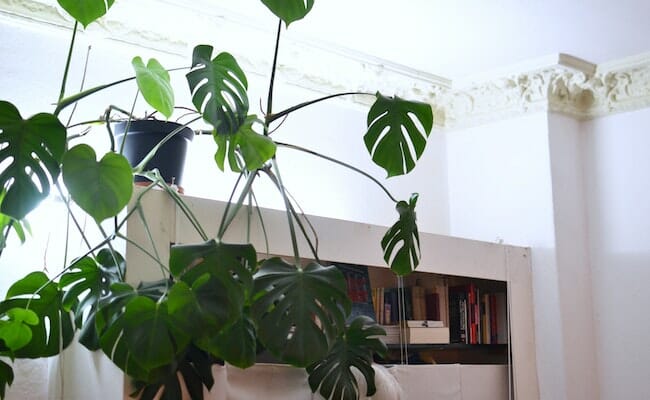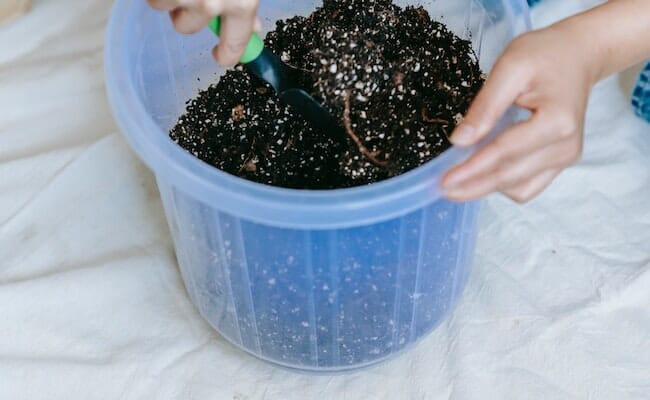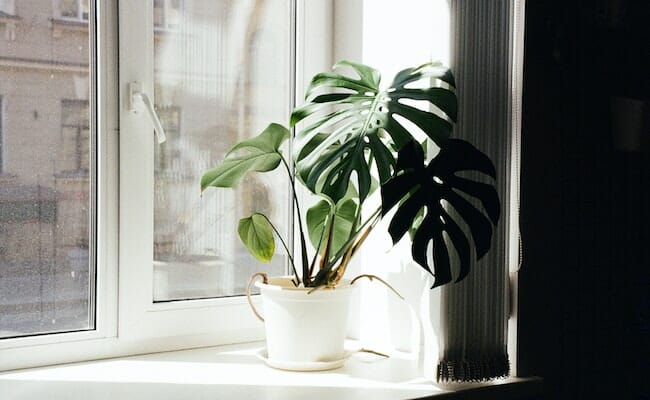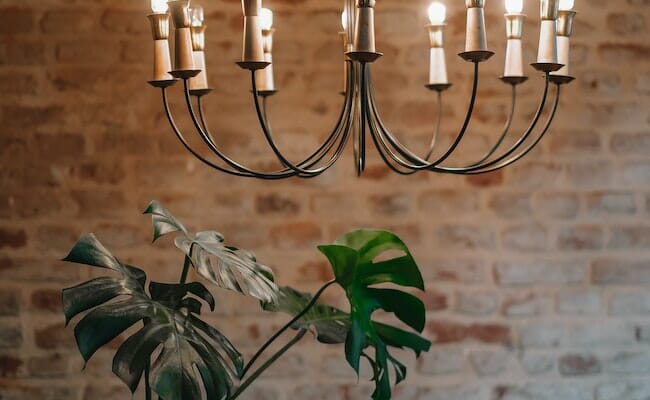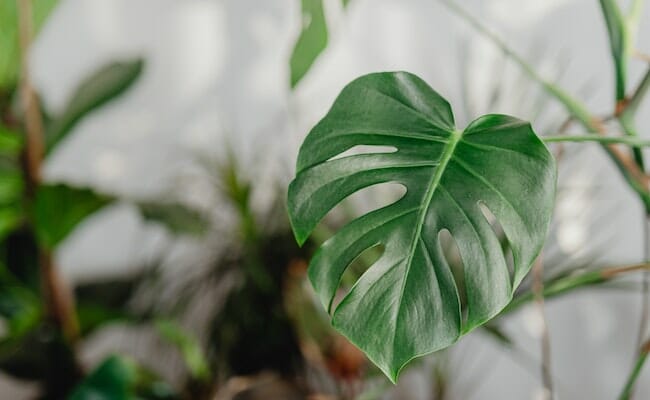How to Care for a Monstera Plant
Social media is filled with indoor plant photos nowadays. You may have seen some of these, and now you want to get one for your living room. A great option for first-timers or busy people is a low-maintenance plant like the Monstera Plant. Consequently, it could maintain your room’s aesthetic for a long time without too much effort. However, you should know the proper way to care for it.
This article will discuss a monstera plan and how you can sustain one. Also, we will explain how to fix potential problems like wilting or yellowing leaves.
What is a Monstera plant?
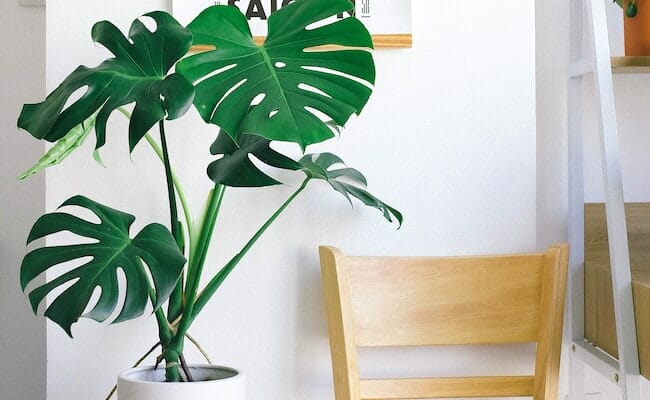
The Monstera plant is native to the rainforests of Central America and Mexico. It uses aerial roots to clamber onto tree branches and develops leaves that look like Swiss cheese.
That is why some people call the Monstera plant the Swiss cheese plant. However, there are 48 species of this plant. Note that we will focus on the Monstera deliciosa plant for this article.
Let us discuss the ones you could purchase at your local Lowe’s or Home Depot.
Species of Monstera plants
Monstera deliciosa is the most popular on the market. People often refer to the Swiss cheese plant due to its massive, heart-shaped leaves that develop large holes.
The “deliciosa” name may bring food to mind; you are correct for thinking that! It produces edible Mexican breadfruit. However, we will focus on caring for Monstera plants, not eating them.
Monstera adansonii species is also known as the monkey mask. Unlike the Monstera deliciosa, its arrow-shaped leaves do not split along the outer edge. Instead, its holes stay inside the leaf margins.
The M. obliqua rarely appears on store shelves. It has narrower, thinner leaves and more leaf holes than other Monstera plants.
Monstera Dubia has shorter stems and smaller, heart-shaped leaves. Consequently, you may find it cuter than the other Monstera variants.
The M. variegata may seem like the owner painted the leaves white. Fortunately, some of its leaves produce this natural color.
Taking care of your Monstera plant
The Monstera plant thrives year-round in warm, humid weather. If you will plant it outdoors, ensure it has slight shade and well-draining soil. Move it indoors if your soil has high salt content.
If you decorate your room with it, make sure it is a deep pot with several drainage holes. Also, place a moss-covered pole in the pot to support its growth.
Maintain a temperature of 65°F to 75°F for your plant. Moreover, keep it away from blasts of heat or cold from air conditioning units, heating vents, and open windows.
Sunlight
Its period of active growth lasts from March to September, so keep it away from direct sunlight. Instead, expose your Monstera plant to filtered light or slight shade.
Excess sunlight may burn the foliage. Still, you should leave it outdoors once a year to encourage lush growth.
Water
Hydrate your plants every one to two weeks until water escapes the drainage holes. Do not pour that excess liquid back into the Monster plant as it has already absorbed its required amount.
The soil will need to dry slightly after every watering. Moreover, hydrate your plant fewer times during fall and winter.
Also, check the soil by hand. Water the Monstera plant thoroughly if it feels dry, two to three inches deep.
Humidity
Rainforests are usually humid, so the Monstera plant needs high water content in the air. Wipe the leaves with warm water every week.
Provide enough humidity by spraying it with a bottle of filtered water or rainwater. Evaporating water humidifies the air near your plant.
Fertilizer
Use a balanced liquid 20-20-20 fertilizer to feed your plant every few weeks during the growing period. The string of numbers stands for 20% nitrogen, 20% phosphorus, and 20% potassium.
Dilute half a teaspoon of the fertilizer in a gallon of water. Next, use diluted fertilizer instead of water to hydrate your plant. Pour it into the soil until it begins to come out of the drainage holes.
Re-potting
Indoor plants eventually outgrow their pots, so you should change your Monstera plant’s pot after some time. You will know the appropriate time once the roots are jutting out of the drainage holes.
Get a larger pot, then place equal parts potting soil, sand, and peat inside. If you cannot find a larger pot, replace the top layer of soil every other year.
Pruning
Plants may obstruct your room as their stems and roots grow longer. You may cut the roots of your Monstera plants if they look ugly or sick. Cut below leaf nodes, areas where leaves connect to the large stems.
This method keeps the aerial roots from leaving stumps. However, you may want to tuck them back into the pot instead of trimming them. Healthy aerial roots support the Monstera plant and absorb air moisture.
Propagating Monstera plants via stem cutting
You could grow more Monstera plants if you already have one. You may choose either stem cutting or air layering to propagate yours. Let us discuss how stem cutting works. Start by preparing these items:
- pair of clean pruning shears
- ground cinnamon
- a glass of water
Then, use the shears to cut off a stem that includes a node, an aerial root, and at least two leaves.
Apply a dash of ground cinnamon on the spot where you cut. It will prevent diseases from entering the cut and help it recover. Next, place the cut portion in a glass of water.
Change the water every three to five days. If you can, use rainwater or filtered water instead of tap water. Wait for two months, and you will see a clump of roots growing.
Then, you can put your new plant in a pot with fresh soil. Keep it moist as it establishes a new home.
Propagating Monstera plants via air layering
Let us discuss how you can make more Monstera plants via air layering. It poses lower risks than stem cutting. The former requires cutting the mother plant only after the baby plant is ready with its new roots.
Your Monstera plant may not look pretty for some time, but you are more likely to keep it healthy. Begin by preparing these items:
- sphagnum moss
- ground cinnamon
- a plastic bag or wrap
- twist ties
- a pair of pruning shears
Find an aerial stem with two nodes or a leaf with a short aerial root below. Then, cut a small notch roughly a third of the stem’s width below the root.
Wrap a one-inch layer of sphagnum moss around where the leaf joins the stem. Next, spray the moss with water to boost moisture and wrap it in a plastic bag or wrap.
Use twist ties to secure the moss and plastic layer. Make sure that the moss can stay moist until the roots develop. Wait for a few months until roots develop.
Then, you can cut the stem below the roots and establish the young plant in a new pot. More importantly, sprinkle ground cinnamon on the mother plant’s wound. It will prevent diseases from entering the cut and facilitate healing.
Common problems you may encounter
The Monstera plant is low-maintenance, but it still requires some of your attention. It may eventually change its appearance because of specific problems.
For example, its leaves may turn brown. That happens when the soil is dry, so ensure you water the plant according to schedule. Also, remove the affected leaves.
Your plant has a fungus if the leaves have brown spots with yellow halos. It probably got there because you watered your plant too much. Either that or you kept the soil wet for too long.
In that case, remove the affected leaves and let the plant dry before watering again. On the other hand, your Monstera plant may develop yellow leaves if the soil is dry.
Cut off the affected leaves and check the soil. If the soil is dry, apply some water. If the leaves are wilting, you may have hydrated your plant too much or too little.
If you watered your plant too much, it could be experiencing root rot. Take out the Monstera plant from the soil to check the roots. Clean them, cut off mushy parts, and then return the plant to the pot with new soil.
Curling leaves could signify that you are watering your plant too little. Alternatively, you might not be providing enough humidity.
If your Monstera plant does not have the “Swiss cheese” look, it may need more water and sunlight. The leaf holes are normal, but ripped leaves are not.
Increase the humidity in your room to solve this issue. Also, be gentle in touching your Monstera plant. Wait for some time, and the rips should heal eventually.
Conclusion
The Monstera plant is a great houseplant because it is low-maintenance. You barely need to expose it to sunlight; it only needs water every week or two.
It is not ideal as an outdoor plant because you will need more effort to maintain it. You will have to spend more time shielding it from the elements and keeping pests away.
You may want to try growing food at home if you prefer a garden. You will still fill your yard with lush greenery and eat homegrown fruits and vegetables as a bonus.
Frequently asked questions
How do you take care of a Monstera?
Keep it away from direct sunlight and water it every week or two. Also, create humidity around the plant by spraying rainwater and wiping the leaves with warm water weekly.
Is the Monstera a good indoor plant?
The Monstera plant is a great indoor decoration because it requires infrequent watering and minimal sunlight. Also, you can choose species that have different appearances.
Are Monstera plants pet-friendly?
Do not place Monstera plants at home if you have cats or dogs. Every part of it has calcium oxalate that can be toxic to animals and humans when ingested.

